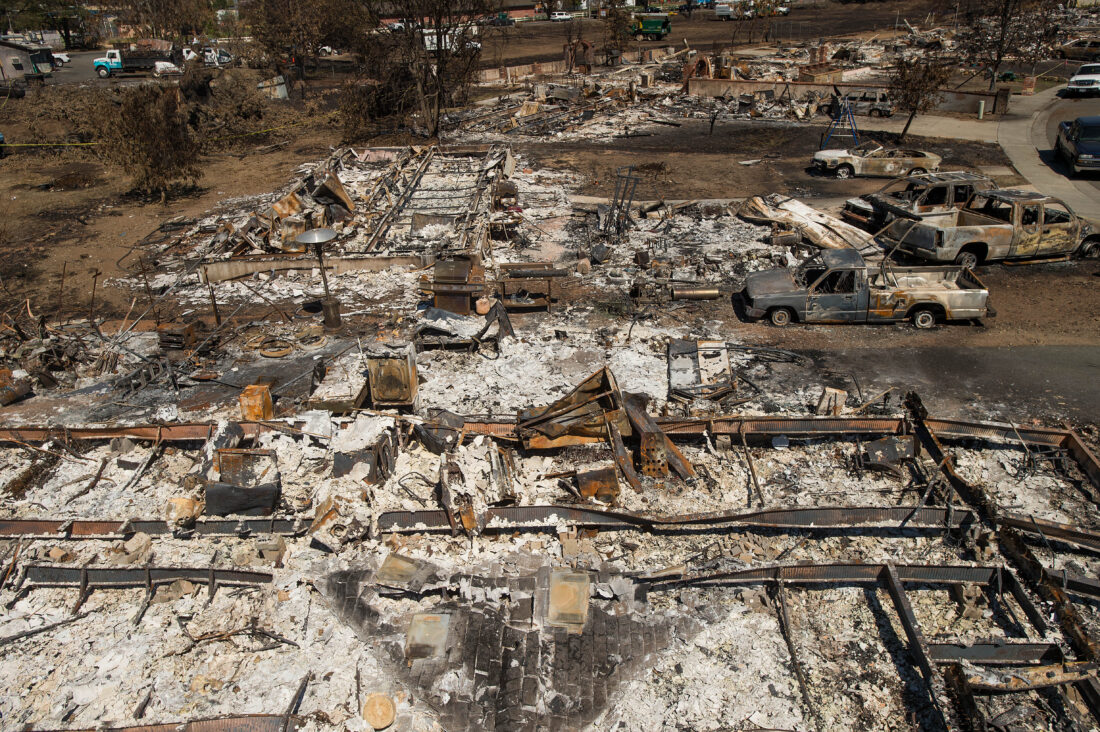Marissa Hernandez, who grew up in a drought-stricken part of northern California, was profoundly moved when she saw a lake filled with water during her first visit to New York over a decade ago. This experience remained vivid in her memory as she and her family decided to move from Grass Valley, California, to the Adirondacks in 2019.
The constant threat of wildfires and the stress of living in a drought-prone area were significant factors in their decision to relocate to a place where they could farm without the persistent worry of water shortages.
Hernandez’s move was part of a broader trend driven by climate change, as extreme weather events increasingly push people to seek safer environments. The White House estimated in a 2021 report that tens of millions of people might migrate due to climate-related reasons in the coming decades.
Climate change is causing more frequent and severe weather events, such as record-breaking heat, wildfires, and hurricanes, which disrupt lives and destroy homes. These changes are prompting migrations to more resilient areas, like the northeastern U.S., where the impact of climate change is less severe.

The Adirondacks, known for their resilience to climate change, are emerging as a potential destination for climate migrants. While the region has experienced some extreme weather, such as floods and heat waves, its cooler climate and abundant water resources make it an attractive option for those fleeing harsher environments.
Local experts and community leaders see this as an opportunity to rejuvenate shrinking communities and attract new residents. However, this potential influx also raises concerns about housing shortages and affordability.
Housing is already a critical issue in the Adirondacks, where demand exceeds supply, particularly in the Tri-Lakes area. Megan Murphy from Adirondack Roots, a housing nonprofit, points out that the existing housing market struggles to accommodate current residents, let alone new migrants. The influx of climate migrants could exacerbate these issues, making it even more challenging for locals and newcomers to find affordable housing.
Several residents who moved from California to the Adirondacks share similar stories of fleeing from the constant threat of wildfires. For example, Echo and his partner left northern California after experiencing devastating wildfires that ravaged their town.
They eventually settled in the Adirondacks, attracted by its safer climate and natural beauty. These personal accounts highlight the psychological toll of living in high-risk areas and the relief found in safer environments.
The Adirondacks’ protected status as a “forever wild” area, along with its natural beauty and resources, make it a unique destination for climate migrants. However, the region faces significant challenges in accommodating an influx of new residents due to its tight land market and restrictive development policies. This situation complicates efforts to build new housing and meet the needs of both existing residents and newcomers.
Real estate trends indicate that people are increasingly considering the Adirondacks as a refuge from extreme weather. While some are seasonal residents escaping the summer heat, others are moving more permanently, seeking a safer climate. This trend could grow as climate change continues to make other areas less habitable, but it also raises questions about sustainability and community integration.
Local real estate agents report a rise in interest from people affected by extreme weather elsewhere. Bob Miller and Margie Philo, both brokers in the region, note that while the market has not yet seen a massive wave of climate migrants, there is a noticeable increase in people seeking relief from harsher climates. However, this migration trend is still in its early stages, and its full impact remains to be seen.
The challenges of accommodating climate migrants in the Adirondacks are compounded by the existing housing crisis. Factors such as high housing costs, limited development potential, and an aging housing stock make it difficult to provide adequate housing for all. This situation requires careful planning and community discussions to balance the needs of new and existing residents while preserving the region’s character.
Ultimately, the Adirondacks may become a model for climate migration adaptation if it can effectively manage housing and community integration challenges. This will require innovative solutions, community collaboration, and sustained efforts to ensure that the region remains a safe and welcoming place for all its residents, both old and new.

